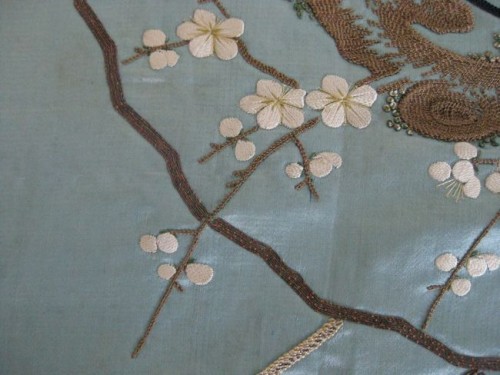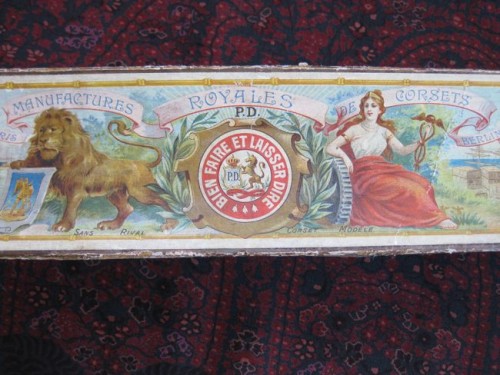As a textile historian I receive frequent requests to give valuations and appraisals for textiles that people own or are thinking about buying. In every case I politely decline the request, and direct the query elsewhere. Usually that is the end of the story, but recently someone got very angry and rude about this, and attacked me for being ‘stupid’ for not doing appraisals. Weird!
So I thought I had better explain why I don’t give valuations for textiles, and won’t tell you what you should pay for a textile.
The first reason is professional and ethical. I was trained as a museum professional, and that is where my career began. International standards of museum ethics, most notable the ICOM Code of Ethics for Museums, direct museum professionals not to give appraisals to private individuals (see CEM 5.2). This is primarily because museums hold items for their societal value, not for their monetary value.
While I am now self employed, I choose to continue to adhere to the code of ethics I was trained in, both as a professional standard, and because it fits my personal code of ethics, and how I feel about textiles.
You see, fabric and handwork based antiques (with the exception of dolls, and items which are linked to celebrities) are generally undervalued on the antiques market. Part of the reason for this is their fragility — textiles are hard to care for and store, and tend to age relatively quickly. Another part of this is the private, personal value we place on textiles. They are, literally, the closest thing to us on a daily basis, and accompany us from birth to death. We tend to associate strong personal memories with textiles (the dress I wore when I met my future husband, the first potholder Grandma taught me to quilt, the cushion I splurged on for our new house), and it is impossible to put a value on those associations.
Sadly though, the biggest reason for the de-valuation of textiles is their categorization as ‘craft’: a lower, not as skilled or honourable pursuit as ‘art’. This designation was mainly created in the Renaissance, often by explicitly misogynistic writers who sought to elevate their own handwork (architecture, sculpture, and painting) at the expense of the mainly female dominated textile industries.
Rather than continue the art/craft disconnect, and instead of telling you what your grandmothers gloves and the quilt your best friend made for you would fetch at an antiques fair or a vintage store (not a lot, as anyone who as ever ‘rescued’ a beautiful handmade quilt from an op-shop will tell you), I’d like to encourage people to appreciate textiles for the exquisite handwork that has gone into them, and for their sheer beauty, and joy they bring us.
I want people to buy textiles for what they are worth to them, to cherish and value them for the textiles own sake, not for what some market has assigned them as a value.






All very good reasons for not doing appraisals.
My vintage textile collection is quite small (It’s all from my grandparents attic) but I understand why you wouldn’t want to put a price on that sort of stuff. The only reason I would ever get an expert to look at it would be to find out how old it is and where it came from, and to get advice on how to care for it. I wouldn’t ever think of selling it.
Are all those pictures from your collection? That cloud collar is incredible, in the picture it doesn’t even look like a collar, what does the full garment look like?
All the pictures are from my collection. I’ll do a post about the cloud collar – it’s actually a very poor example of the type, and in terrible condition, but it makes an interesting study piece.
This was a very informative post, and beautiful pics! I am sorry someone was rude to you, people are just weird sometimes! There’s a lesson on that corset box… “Bien faire et laisser dire” – do well and let them talk is my personal translation! 🙂
I know the feeling. I told my boss about a potential problem with information storage–and got a lawyer’s cease and desist letter the next day!
Thanks for this insight into ‘your world’, but fancy having to justify your reasonings!!! I can only imagine just how beautiful your ‘stash’ of fabrics is…
If you ever have a spare moment, I would be intrigued as to how you store your personal antique fabrics and handicrafts..
✿ Judy
made by J
Good for you for sticking to your values. I absolutely agree that there is much more in sentimental (which I interpret as a personal level of “societal”) value in most textiles that the average person owns.
Exactly! I gave La Dreamstresse my great-grandmother’s stuff precisely because it invoked all of the abuse I dealt with. BUT in a new owner’s hands, it gets new life and lift. By that same token, if someone sold a beloved brooch to someone else, it would also hold a different value to the new owner.
That cherry blossom embroidery is incredible. Good on you for sticking to that code of ethics – too often these days there isn’t enough adherance to ethical standards. That silly person had no right to get snarky at you!
I do wish we had some kind of museum for what might be called ‘domestic textiles’, the things made in a domestic rather than a commercial context, made for pleasure and for use.
They are undervalued, and I fear the things made by women (I’m thinking of New Zealand but I think it is probably a widespread problem) are being allowed to decay and disappear from our knowledge. Bad economic times discourage the formation of new museums, but they seem, ironically, to increase the production of domestic textiles.
I do agree that we should cherish them for their own sake, and for the skills (or sometimes, touchingly, lack of) that went into the making.
Excellent post. Aren’t some people sad and mean!
But what am I going to do with the woollen socks my great grandmother knitted in the 1930s???
While there isn’t a dedicated museum for it in NZ, Te Papa, under the influence of a couple of history curators with interests in that area (Kirstie Ross in particular) does collect domestic textiles quite assiduously. Some of these items are currently on display in the ‘Slice of Heaven: NZ in the 20th Century” exhibition at the moment. There are many other delicious items in the collection – I remember a poorly made but delightful 1890s tui-patterned apron, and some 1930s ‘art silk’ baby clothes in particular. I suspect Te Papa would be VERY interested in your great-grandmother’s woollen socks – it’s so hard to find everyday clothing from that era, and even harder to find items with a story and provenances. The problem is that no-one thinks that socks are worth anything and thinks to offer them to museums.
I don’t think NZ is big enough to support a dedicated domestic textile museum, but I do wish Te Papa would do a full exhibition on domestic textiles (and not just a little one in Eyelights).
Thank you, Dreamstress! I’ll follow that up.
I hate that someone did that to you! Rudeness really ticks me off. I completely understand where you’re coming from. Sentimental value is so much greater than any societal value could ever be.
I would love to see some of your collection! A lot of that stuff is just amazing. Unfortunately, the only antique textile I have is a child’s coat (which I adore!!!). I have to keep telling myself, “One day.”
P.S. I see where your picture came from. 🙂
Ohhh! What would it take to do a Dreamstress Exhibit?!?
Weird is right, what a ridiculous thing to actually get angry at a person over! I’m sorry you were made to feel the need to explain yourself, but I’m sure everyone here is appreciative of your enlightening explanation.
There are certainly enough people in the world willing to do textile appraisals that it’s absurd for anyone to get upset merely because a certain person they have asked refuses to do one. Sometimes, I get frustrated with the illogic and irrationality of my fellow human beings, and your story made me feel that way.
Thanks for the discussion of your philosophy on this subject (and the great photos!).
This was a really interesting read – thanks for sharing your thoughts. I have to admit, it’s not something I’d ever really thought about before in terms of antiques value of textiles, but I agree with what you’re saying. It also explains why I’ve seen textiles in antiques shops and thought they were scandalously cheap for what they were! I’m a big fan of paying what something is worth _to me_.
I once asked a curator about the value of an indian dart head my family found (not knowing about that policy for museums) and he nicely told me he had no idea but gave me some ideas of where to find out. (I’m feeling quite smug about not going nuts on the guy and just said thanks for all his help in dating it and for taking us behind the scenes to his work space and showing us around. He also told us how to keep the edges of the artifact from chipping off.) As to the value of the dart head- considering the thing was thousands of years old it wasn’t worth much. It is worth more as a good family story.
I agree. Textiles are a labour of love in every sense. I could never put a monetary value on my first hand sewn quilt, my wedding dress or the vintage treasures I come across from time to time. The value of our craft is in the love, appreciation and respect of it.